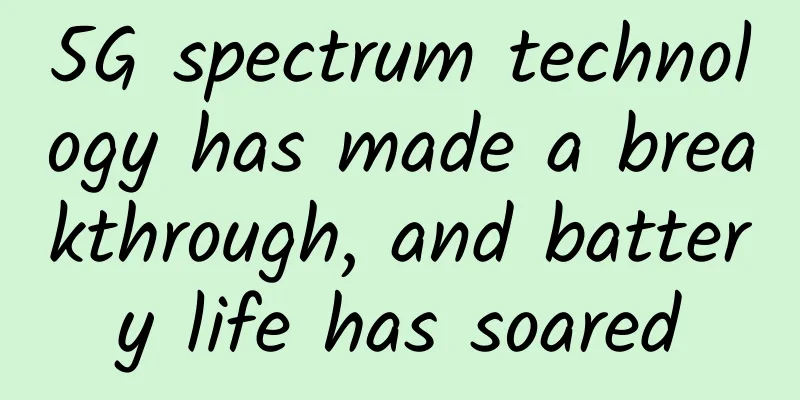5G spectrum technology has made a breakthrough, and battery life has soared

|
Improving battery life has been a challenge for all IoT application industries. Researchers have now built a new component that will more efficiently allow access to the highest 5G frequencies, extending device battery life and speeding up the speed at which we can process content such as high-definition streaming. How does it work? Smartphones are equipped with switches that perform multiple tasks. One of the main tasks is switching between networks and spectrum frequencies: 4G, Wi-Fi, LTE, Bluetooth, etc. Current radio frequency (RF) switches that perform this task are always on, which consumes precious processing power and battery life. A team from The University of Texas at Austin and the University of Lille in France has found a solution. "The switch we developed is more than 50 times more energy efficient than the switches used today," said Deji Akinwande, a professor in the Department of Electrical and Computer Engineering in the Cockrell School of Engineering, who led the research. "It can transmit HDTV streams at frequencies of 100 GHz, which is unheard of in broadband switching technology." The new switch remains closed unless other steps are actively helping the device jump between networks, saving battery life for other processes. They also demonstrated the ability to transfer data at baseline speeds above 5G speeds. The Defense Advanced Research Projects Agency (DARPA) has been pushing for years to develop "near-zero-power" RF switches. Previous researchers have found success at the lower end of the 5G spectrum, where speeds are slower but data can travel longer distances. It’s the first switch that can function across the spectrum, from low-end gigahertz (GHz) frequencies to high-end terahertz (THz) frequencies, and could one day be key to the development of 6G. The technology's impact extends beyond smartphones. Satellite systems, smart radios, reconfigurable communications, the "internet of things" and defense technology are all examples of other potential uses for these switches. The research results have been published in the journal Nature Electronics. |
<<: Satellite Internet or 5G, which is cheaper?
>>: Are operators “breaking away from” the old ways? 2G/3G networks will eventually leave the stage
Recommend
5G will be 'revolutionary' - but security concerns remain high
Although research shows that 5G technology will b...
HostYun offers 10% off on all items, with monthly payments starting from 13.5 yuan for Korean VPS and 22.5 yuan for Tokyo IIJ lines
HostYun is a VPS hosting brand founded in 2008. I...
The router is not to blame for the slow WiFi connection. Look at the receiving end.
The Year of the Rooster has arrived! Good luck to...
The ranking of countries with the fastest internet speeds in the world has been revealed!
Computers and the Internet are one of the greates...
The 5G timetable of the three major operators is determined: it is not too late to change your mobile phone in 2019
At the recently concluded MWC 2018, 5G became a h...
How does 5G unlock the development potential of VR?
In March 2014, Facebook announced that it would a...
Justg: South Africa VPS annual payment of US$19.99, KVM architecture, CN2 GIA line
The tribe shared information about Justg in Augus...
Maxthon Hosting: CN2 GIA line VPS monthly payment starts from 54 yuan, and you can choose Los Angeles/Hong Kong/Korea and other data centers
At present, the best domestic access lines for ov...
What is a Bluetooth gateway and how to use it?
What is a Bluetooth Gateway? A Bluetooth gateway ...
Network Quality of Service (QoS) Technology
1. Introduction Branches of the national financia...
Why can't I access my home computer from work?
The previous article "Why do all our home IP...
Is 5G connectivity the future of IoT?
The three major US mobile operators AT&T, T-M...
GTI releases 2.3GHz spectrum industry joint statement
As 5G accelerates globalization, it will unlock u...
In the 5G era, what is the United States worried about?
Today I want to talk to you about a technical top...
If the server does not receive the fourth wave request during the four TCP wave requests, will the server keep waiting?
I'm going to copy an answer from a certain we...



![[Black Friday] ExtraVM: 50% off VPS with 2GB or more memory, 1Gbps unlimited traffic, data centers in Los Angeles/Dallas/Netherlands](/upload/images/67cabcd3c3a84.webp)





